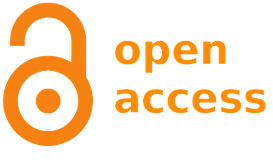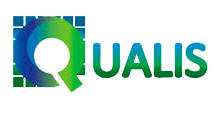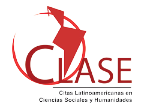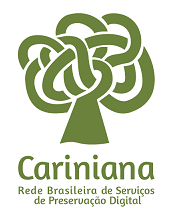Web 2.0 tools in information units: aspects of promotion and continuous improvement identified in scientific papers
DOI:
https://doi.org/10.5433/1981-8920.2019v24n2p263Keywords:
Web 2.0, Interactivity, Information Units, Social Network Sites, BlogsAbstract
Introduction: The evolution of the internet and consequently of the computer environment has led to the emergence of Web 2.0 tools, which in turn allow the active participation of users in digital processes. Objective: Identify the types of interactions occurring in blogs and social network site Facebook, between librarians and users, for promotion and improvement of services and products offered by information units specifically university libraries. Methodology: Scientific articles were analyzed in two different ways using a mixed approach; quantitatively with the aid of descriptive statistics for the numerical identification of those who talk about Facebook and blogs and regarding the geographical origin of the empirical fields. For the qualitative analysis, the content analysis technique was used in the interaction, use and evaluation categories for the subsequent treatment of the results. Results: The results showed that library attention regarding the Web 2.0 tools is focused on usage, followed by evaluation. Interaction with users is minimized. Conclusions: Information units are able to advertise their products and services via Internet, but they are not making use of all the potential that users have to improve their activities and processes.Downloads
References
ARAÚJO, P. C. O blog “na era da informação” como ferramenta de compartilhamento de informação, conhecimento e para a promoção profissional. Revista ACB: Biblioteconomia em Santa Catarina, Florianópolis, v. 15, n. 1, p. 201-213 jan./jun., 2010. Disponível em: http://revista.acbsc.org.br/index.php/racb/article/view/676/pdf_26. Acesso em: 20 fev. 2016.
BARDIN, L. Análise de conteúdo. Lisboa: Edições 70, 1977.
BOYD, D.; ELLISON, N. Social network sites: definition, history, and scholarship. Journal of Computer‐Mediated Communication, Indiana, v. 13, n. 1, 2007. Disponível em: http://jcmc.indiana.edu/vol13/issue1/boyd.ellison.html. Acesso em: 12 jun. 2016.
CAPURRO, R. Epistemologia e ciência da informação. In: ENCONTRO NACIONAL DE PESQUISA EM CIÊNCIA DA INFORMAÇÃO, 5., 2003, Belo Horizonte. Anais [...]. Belo Horizonte: Associação Nacional de Pesquisa e PósGraduação em Ciência da Informação e Biblioteconomia, 2003. Disponível em: http://www.capurro.de/enancib_p.htm. Acesso em: 16 jun. 2016.
CAPURRO, R.; HJØRLAND, B. O conceito de informação. Perspectivas em Ciência da Informação, Belo Horizonte, v. 12, n. 1, p. 148-207, jan./abr. 2007. Disponível em: http://www.scielo.br/pdf/pci/v12n1/11.pdf. Acesso em: 2 jun. 2016.
CARDOSO, P.; SILVA, F. G.; LIMA, G.; COSTA, A. Utilização do Facebook como meio de divulgação de fontes de informação pela Biblioteca de Referência NEAB/UDESC. Revista ACB, Florianópolis, v. 20, n. 1, p. 34-40, abr. 2015. Disponível em: https://revista.acbsc.org.br/racb/article/view/977. Acesso em: 2 dez. 2016.
CASEY, M. What Library 2.0 is not. LibraryCrunch, [S. l.: s. n.], 2005. Disponível em: http://www.librarycrunch.com/2005/10/what_library_20_is_not.html. Acesso em: 20 maio 2016.
CASEY, M.; SAVASTINUK, L. Library 2.0: a guide to participatory library service. New Jersey: Information Today, 2007.
CHAN, C.; CMOR, D. Blogging toward information literacy: engaging students and facilitating peer learning. Reference Services Review, v. 37, n. 4, p. 395-407, 2009. Disponível em: http://repository.hkbu.edu.hk/cgi/viewcontent.cgi?article=1001&context=lib_ja. Acesso em: 20 maio 2016.
CRESWELL, J. W. Projeto de pesquisa: métodos qualitativo, quantitativo e misto. 3. ed. Porto Alegre: Artmed, 2010.
CUNHA, M. B. A biblioteca universitária na encruzilhada. DataGramaZero: Revista de Ciência da Informação, Rio de Janeiro, v. 11, n. 6, dez. 2010. Disponível em: http://www.dgz.org.br/dez10/Art_07.htm. Acesso em: 18 maio 2016.
GANSTER, L.; SCHUMACHER, B. Expanding beyond our library walls: building an active online community through Facebook. Journal of Web Librarianship, v. 3, n. 2, p. 111-128, jun. 2009. Disponível em: http://www.tandfonline.com/doi/abs/10.1080/19322900902820929. Acesso em: 22 maio 2015.
HOUK, K.; THORNHILL, K. Using Facebook page insights data to determine posting best practices in an academic health sciences library. Journal of Web Librarianship, v. 5, n. 2, p. 372-388, dez. 2013. Disponível em: http://www.tandfonline.com/doi/abs/10.1080/19322909.2013.837346. Acesso em: 14 set. 2016.
LÉVY, P. A inteligência coletiva: por uma antropologia do ciberespaço. 8. ed. São Paulo: Edições Loyola, 2011.
LÉVY, P. Cibercultura. São Paulo: 34, 1999.
MACIEL, A. C.; MENDONÇA, M. A. R. Bibliotecas como organizações. 2. ed. Rio de Janeiro: Interciência, 2006.
MANESS, J. M. Library 2.0 theory: web 2.0 and its implications for libraries. Webology, v. 3, n. 2, jun. 2006. Disponível em: http://www.webology.org/2006/v3n2/a25.html. Acesso em: 25 jul. 2016
MARGAIX-ARNAL, D. Conceptos de Web 2.0 y Biblioteca 2.0: origen, definiciones y retos para las bibliotecas actuales. El Profesional de la Información, v. 16, n. 2, p. 95-106, mar./abr. 2007. Disponível em: http://eprints.rclis.org/archive/00009785. Acesso em: 11 maio 2008.
O’REILLY, T. What is Web 2.0: design patterns and business models for the next generation of software. O’Reilly Media: Sebastopol, 2005. Disponível em: https://www.oreilly.com/pub/a/web2/archive/what-is-web-20.html.Acesso em: 17 mar. 2016.
OFILI, D. N.; ENWANTA, M. Facebook as an information service delivery tool: perspectives of library staff at the University of Benin, Nigeria. African Journal of Library, Archives and Information Science, v. 24, n. 2, p. 195-202, out. 2014. Disponível em: http://www.ajol.info/index.php/ajlais/article/view/135074. Acesso em: 11 maio 2016.
PONTES, V. P. El contexto informacional del blog para la diseminación de la información: un análisis teórico. Biblios: revista de bibliotecología y ciencias de la información, Lima, n. 52, p. 27-34, abr./jun., 2013. Disponível em: http://biblios.pitt.edu/ojs/index.php/biblios/article/view/101. Acesso em: 28 maio 2016.
PRIMO, A. Enfoques e desfoques no estudo da interação mediada por computador. 404NotFound, n. 45, 2005. Disponível em: http://www.ufrgs.br/limc/PDFs/enfoques_desfoques.pdf. Acesso em: 22 maio 2016.
PRIMO, A. Interação mediada por computador: comunicação, cibercultura, cognição. Porto Alegre: Sulina, 2007.
PRIMO, A.; RECUERO, R. Hipertexto cooperativo: uma análise da escrita coletiva a partir dos Blogs e da Wikipédia. Revista FAMECOS: mídia, cultura e tecnologia, Porto Alegre, v. 10, n. 22, 2003. Disponível em: http://revistaseletronicas.pucrs.br/ojs/index.php/revistafamecos/article/view/3235/2496. Acesso em: 20 maio 2016.
RAFAELI, S. Interactivity: from new media to communication. In: Sage annual review of communication research: advancing communication science. Beverly Hills: Sage, 1988. p. 110-134.
RECUERO, R. Redes sociais na internet. Porto Alegre: Sulina, 2009.
RUSSO, M. Fundamentos em Biblioteconomia e Ciência da Informação. Rio de Janeiro: E-papers, 2010.
SACHS, D.; ECKEL, E. J.; LANGAN, K. A. Striking a balance: effective use of Facebook in an academic library. Internet Reference Services Quarterly, v. 16, n. 1-2, p. 35-54, 2011. Disponível em: http://scholarworks.wmich.edu/cgi/viewcontent.cgi?article=1018&context=library_pubs. Acesso em: 22 May 2016.
SANTOS, E. L.; ROCHA, S. M. O blog como ferramenta de comunicação entre a biblioteca e seus usuários: a experiência da biblioteca Lydio Bandeira de Mello, da Faculdade de direito da Universidade Federal de Minas Gerais. Encontros Bibli: Revista Eletrônica de Biblioteconomia e Ciência da Informação, Florianópolis, v. 17, n. 33, p. 134-152, abr. 2012. Disponível em: https://periodicos.ufsc.br/index.php/eb/article/view/1518-2924.2012v27n33p134. Acesso em: 2 ago. 2016.
SAPP, L.; COGDILL, K. Blogging in support of health information outreach. Medical Reference Services Quarterly, v. 29, n. 3, p. 240-248, 2010. Disponível em: http://www.tandfonline.com/doi/abs/10.1080/02763869.2010.494488. Acesso em: 22 maio 2016.
Downloads
Published
How to Cite
Issue
Section
License
A revista se reserva o direito de efetuar, nos originais, alterações de ordem normativa, ortográfica e gramatical, com vistas a manter o padrão culto da língua e a credibilidade do veículo. Respeitará, no entanto, o estilo de escrever dos autores. Alterações, correções ou sugestões de ordem conceitual serão encaminhadas aos autores, quando necessário.
O conteúdo dos textos e a citação e uso de imagens submetidas são de inteira responsabilidade dos autores.
Em todas as citações posteriores, deverá ser consignada a fonte original de publicação, no caso a Informação & Informação.
















